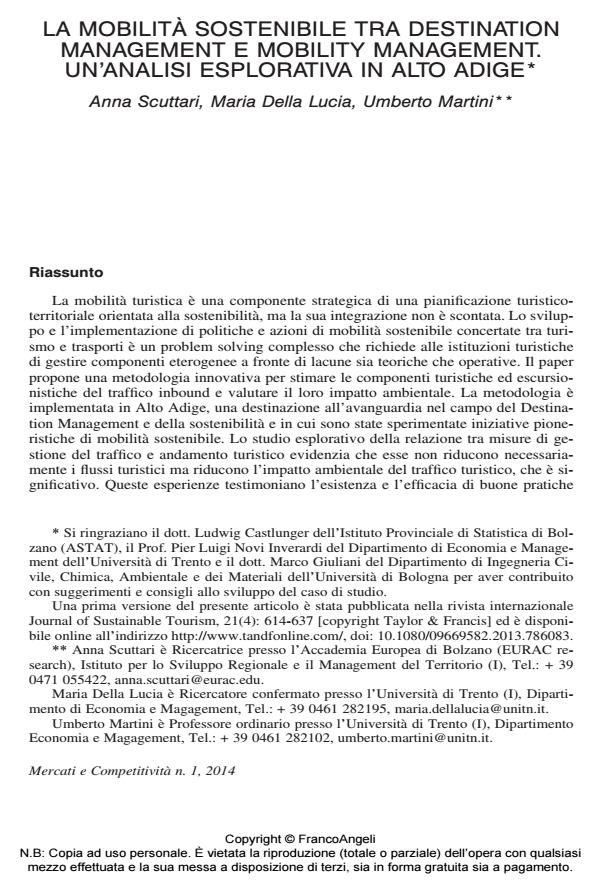Sustainable mobility between destination management and mobility management. An exploratory study in South Tyrol
Journal title MERCATI E COMPETITIVITÀ
Author/s Anna Scuttari, Lucia Maria Della, Umberto Martini
Publishing Year 2014 Issue 2014/1
Language Italian Pages 27 P. 125-151 File size 1069 KB
DOI 10.3280/MC2014-001007
DOI is like a bar code for intellectual property: to have more infomation
click here
Below, you can see the article first page
If you want to buy this article in PDF format, you can do it, following the instructions to buy download credits

FrancoAngeli is member of Publishers International Linking Association, Inc (PILA), a not-for-profit association which run the CrossRef service enabling links to and from online scholarly content.
Tourist mobility is a strategic component of sustainable tourist-territorial planning; however the need for its integration is not always obvious. Coordinating the development and implementation of sustainable mobility policies in the areas of both tourism and transport is complex: the institutions involved in tourism need to manage heterogeneous components in the face of both theoretical and operational gaps. This paper proposes an innovative methodology to estimate tourist and same-day visit inbound traffic components and assess their environmental impact. The methodology has been implemented in South Tyrol, a destination at the forefront of Destination Management and sustainability that is experimenting with pioneering sustainable mobility initiatives. The exploratory study of the relationship between traffic management measures introduced in pilot cases and tourist flows shows that they do not necessarily reduce tourist demand but do reduce the environmental impact of tourist traffic, which is significant. These experiences demonstrate the existence and effectiveness of best practices that are not currently directly related to mobility analysis tools, but could benefit from them.
Keywords: Destination management; mobility management, sustainable tourist mobility, tourist traffic analysis, mobility management’s best practices of, effects of mobility management measure impact
Anna Scuttari, Lucia Maria Della, Umberto Martini, La mobilità sostenibile tra destination management e mobility management. Un’analisi esplorativa in alto adige in "MERCATI E COMPETITIVITÀ" 1/2014, pp 125-151, DOI: 10.3280/MC2014-001007